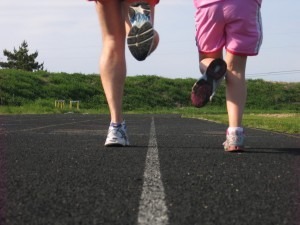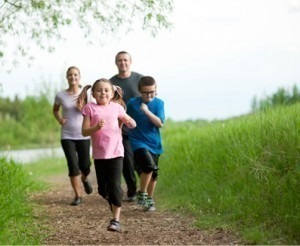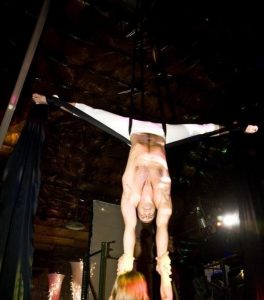Sports Massage: What’s in it for You?
Sports Massage: What’s in it for You?
Over the years I’ve had many questions about what a sports massage is, and is it beneficial to athletes. Massage Magazine did an outstanding (and very long) report about this topic, and I’ll break it down to smaller pieces for you.
The first part is “What’s a Sports Massage and Why is it Beneficial?”
What is sports massage?
Sports massage is similar to Swedish massage, and research published in the North American Journal of Sports Physical Therapy explains that sports massage refers to “a collection of massage techniques performed on athletes or active individuals for the purpose of aiding recovery or treating pathology.”
Simply, it is massage designed to help active people prevent and address injuries while engaging in their favorite sport.
James Waslaski of Integrated Manual Therapy & Orthopedic Massage, and a long time insurance policy holder of Massage Magazine Insurance Plus agrees with this definition, adding that sports massage serves other valuable purposes as well.
 For instance, it helps athletes better prepare their bodies for an upcoming competition, and it can also enhance their performance during the event. But it’s also important to realize that each athlete has different needs with regard to sports massage services.
For instance, it helps athletes better prepare their bodies for an upcoming competition, and it can also enhance their performance during the event. But it’s also important to realize that each athlete has different needs with regard to sports massage services.
“When I worked with the [New York] Yankees and the 1996 Olympic athletes, they would want specific, different techniques,” says Waslaski, a certified personal trainer with the National Academy of Sports Medicine (NASM) who teaches approximately 40 seminars per year around the globe.
Each of these techniques provide different results, thus also providing the athlete with more individualized benefits.
Benefits of sports massage
As far as actual benefits received, Waslaski explains that it is often the stage the athlete is in that determines the value a particular sports massage technique has to offer. These can be broken down into two categories: pre and post-event.
Pre-event sports massage benefits
A former supervisor of the Boston Marathon, Waslaski says that pre-event sports massages are often used to “activate weak muscles and check firing patterns.”
 These two factors can enhance the athlete’s performance by helping the body more fully prepare for the upcoming physical activity.
These two factors can enhance the athlete’s performance by helping the body more fully prepare for the upcoming physical activity.
Research has confirmed that pre-event sports massages can provide athletes with additional benefits as well. These often include experiencing a lower blood pressure, an increase in strength and improvements in flexibility.
Jonny Pietrunti, LMT, CSCS, is the director of clinical services at Pacific College of Oriental Medicine in New York, New York. He shares that he’s seen the last effect, increased flexibility, firsthand with his clients.
“Due to the repetitive nature of some sports, many of my clients develop limitations in range of motion,” says Pietrunti. “While a certain amount of ‘function tightness’ is important for athletes, excessive limitation in ROM [range of motion] and simple aches and pains from repetitive use can be problematic, and sports massage can help with that.”
Multiple pieces of research have found this same result. For instance, a systematic review and meta-analysis published in the Journal of Physical Therapy Science in February 2017 found that “massage therapy significantly improved the shoulder range of motion.”
Additionally, the most favorable effect for this area of the body was found in movements related to flexion and abduction.
Post-event value of sports massages
Sports massage is also beneficial post-event as it helps promote recovery, says Waslaski. Studies have found the same, indicating that one way in which massage aids in the recovery process is by helping the body remove blood lactate, a lactic acid that appears in the blood when tissues don’t get enough oxygen during anaerobic metabolism.
This same research found that massage further helps by reducing issues related to delayed onset muscle soreness (DOMS). DOMS is not only painful to the athlete, but it can also reduce ROM or decrease muscle strength.
Massage can also be especially helpful post-event if there is an injury, says Waslaski. In these cases, massage therapists can assist the athlete in overcoming the injury by first performing a clinical massage to assess and evaluate the problem.
The next step, says Waslaski, is to implement the appropriate sports massage technique to help it begin to heal.
Sports massages can also provide athletes relaxation benefits, a factor that Pietrunti says is “often understated” yet can help them get into a better mental state not only for the event, but for life in general.
“Many athletes and weekend warriors put themselves under a great deal of mental stress in preparation for a competition,” says Pietrunti. “For many amateur athletes, this is exacerbated by other day-to-day stressors from their jobs, families and life. Sometimes, just setting aside an hour to relax and unwind can be a huge step towards better performance and quality of life.”
Julie McElroy, LMT, specializes in sports massage and adds that this type of massage also provides “an unintended additional benefit” to athletes, which is the opportunity to discuss various details related performance with the massage therapist.
This includes talking about topics such as overtraining, psychological stress and family issues as “athletes’ challenges are both physical and emotional,” says McElroy. “A relationship with a sports therapist who ‘gets it’ seems to positively add to the therapy.”
As you can see, this topic is extensive and important.
The bottom line is, if you are an athlete, a sports massage is extremely helpful to keeping you active and healthy. And if you are an “armchair athlete”, meaning you are active only a day or two a week, a sports massage is also beneficial, because it’s going to help you heal sore muscles before they make you miserable.
Watch for the next article in this series.
If you want to read the entire article, here it is: http://bit.ly/HOHsportsmassage
